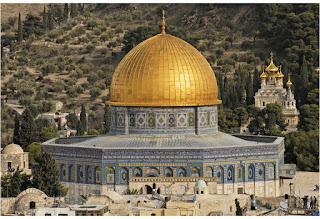Who- Anthemius of Tralles and Isidorus of Miletus,
What- aerial view of Hagia Sophia (looking North)
When- 532-537
Where- Constantinople (Istanbul) Turkey
Why- built/designed for Justinian
How- dome, butresses, minarets, Pendative construction
Who- Emperor
What- Katholikon (looking northeast),
When- first quarter of 11th century
Where- monastery of Hosios Loukas, Distomo, Greece,
How- light stones framed by dark red bricks (cloisonne technique) arcurated windows, projecting apses, and varying rooflines
Who- Eastern Christians
What- Virgin (Theotokos) and Child between Saints Theodore and George, icon
When- sixth or early seventh century,
Where- Monastery of Saint Catherine, Mount Sina, Egypt
Why- played important role in monastic religious life both public and private
How- Enaustic on wood
Who-
What- Archangel Michael icon,
When- ca 1100
Where-Venice
Why- treasure brought from Constantinople for St. Mark's
How- image
Who- Byzantine artist
What- Saint Apollinaris amid sheep
When- 533-549
Where- Church Sant'Apollinare in Classe, Ravenna, Italy, ca
Why- indicates how Saint Apollinaris stands beneath Christ
How- apse mosaic
Who- Byzantine painter
What- Annunciation, reverse of two-sided icon
When- early 14th century
Where- from the Church of the Virgin Peribletops, Ohrid, Macedonia
Why- painting on two sides because it was carried in processions
How- Tempera and linen on wood
Who- Byzantine artist
What- Theodora and attendants
When- ca 547
Where- on the south wall of the apse, San Vitale, Ravenna, Italy
Why- represented women within a definite architecture
How- mosaic
Who- Byzantines
What- Christ before Pilate
When- early sixth century
Where- Rosanno Gospels
Why- played important role in monastic religious life
How- manuscript, purple-dyed pages
Who- master carver in Constantinople
What- Archangel Michael, right leaf of a diptych
When- early sixth century
Where- British Museum, London
Why- depicts the archangel Michael (one of the seven archangels)
How- ivory panel sculpture
Who- Byzantine painter (Greco-Roman heritage)
What- Christ as Savior of Souls, icon
When- early 14th century
Where- Saint Clement, Orhid, Macedonia
Why- Byzantine spirituality
How- Tempera, linen, and silver on wood
Who- Mosaicist
What- Throne of Maximianus
When- ca 546-556
Where- San Vitale, Ravenna museum
Why- Stresses the bishop's importance
How- Ivory
Who- Middle Byzantine architects
What- Christ as Pantokrator
When- ca. 1090-1100
Where- Church of the Dormition, Daphni, Greece
Why- depicts gigantic icon hovering dramatically in space, connecting the awestruck worshiper with heaven through Christ
How- Dome mosaic
















































